The natural eye | Leica Q3 43
Disclaimer: This is – after the Leica SL3 – my second post about a camera that I don’t own myself. This Leica Q3 43 I tested belong to Foto Görlitz, probably one of the best-known authorised Leica dealers in Germany. The owner of the shop, Alex Görlitz, kindly provided me with this camera for testing. And not just for a few days, but for some weeks! And it arrived just in time for my photo trip to Venice. Many thanks again at this point to Alex, much appreciated!
Nevertheless, I have no commercial or financial gain from this loan and no connection to the Leica company. I am only doing this out of love for photography and pure curiosity about new things. Everything I write here is my honest opinion and that will not change in the future. So, as always, independent and from a real user’s perspective. 😉
Shortcuts to the topics:
Basically, the Leica Q3 43 is still a Q3, just with a slightly different colour of leatherette and a different lens. So, I’ll save myself the trouble of writing a lot of basic information about the camera here. I’ve already written a lot about the Q3, which I do own and use myself. Feel free to read about its features and my opinions about the camera here and here. In this post I will mainly focus on the differences.
Nevertheless, the text part is quite long for other reasons – largely because of my thoughts on focal lengths. For the impatient, here is still the option to jump to the individual points.
LEICA Q3 43 – THE APO-SUMMICRON 43 – Why 43mm? – Why not 50mm or 40mm? – Real APO? – IS THIS LENS ANY GOOD? – Optics – Mechanics – Autofocus – OIS – The size – Filtergate – COMPARISON 28MM and 43MM – Field of view – Perspective – Rendering – CONCLUSIONS – What could that me for you? – What does that mean for me?
The Leica Q3 43
So, let’s start with the two differences. The first difference – colour – is relatively subtle and only a matter of taste anyway. I quite like the grey – or rather anthracite – leatherette, but find the black one a little more discreet. However, it does look classy. Depending on the light, the difference is much smaller than you would expect from the photos. In dim light, you have to take a closer look at which of the cameras you’re grabbing when they’re next to each other.

The second difference – the lens – changes almost everything. This difference is so crucial that it is even reflected in the camera’s name. In contrast to the ‘classic’ Q3, it does not have the Summilux 1.7/28mm, but the new APO-Summicron 2.0/43mm.
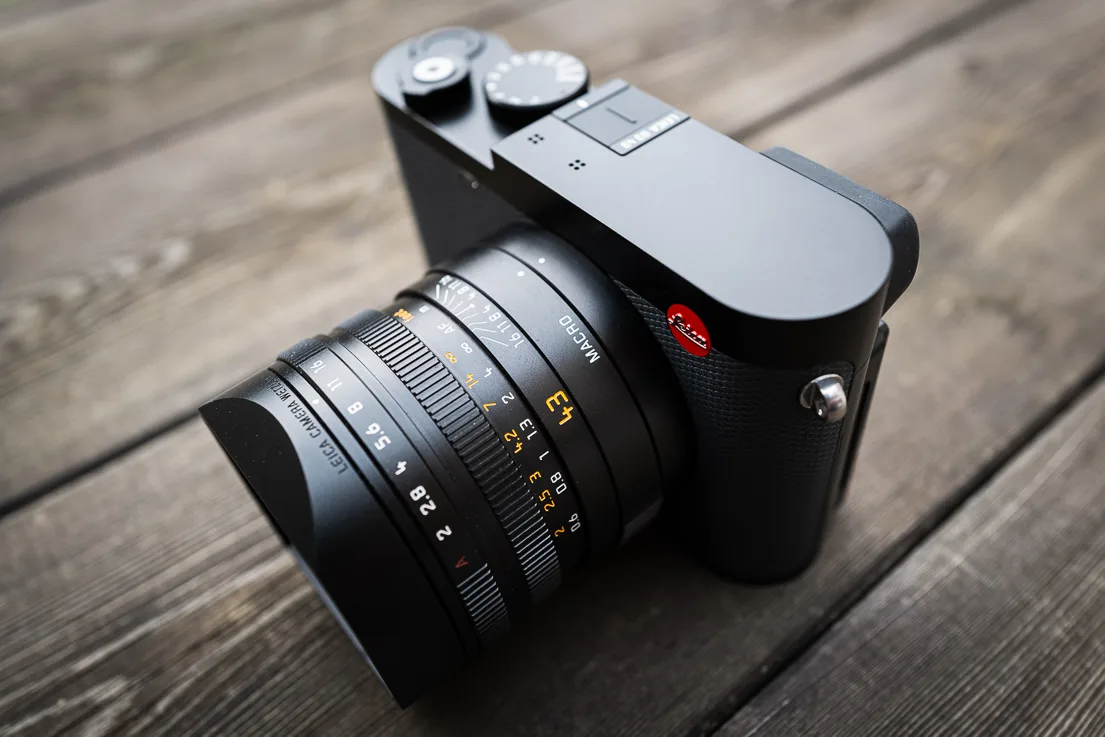
Apart from that, expect absolutely no other changes. Everything else is exactly the same, apples to apples.
The APO-Summicron 2.0/43mm
For me – and I think most of the others too – it was a surprise. When the first rumours of a new Q3 with a 43mm lens emerged, I could hardly believe it at first. Why on earth 43mm? What would the camera look like? How big would the lens be? And what would it all be for?
The release followed surprisingly quickly after the rumours and there it was, a Leica Q3 43 with a real 43mm lens. No longer a Summilux with 28mm like all Qs since 2016, but a new APO-Summicron with 43mm. In terms of speed, this is not a big deal. As the Summilux of the Q(3) does not have an aperture of f1.4 anyway, but ‘only’ f1.7, it’s nothing to worry about. I’m absolutely fine with f2.0 here.
The new focal length, in contrast, is a major change. The difference between 28mm (or even a little less, as we know) and 43mm is much greater than these figures might initially suggest. The field of view is reduced from a good 75 degrees to only approx. 53 degrees. This is, of course, very visible and changes the way of photographing significantly.
On the one hand, we are talking about a significant wide-angle lens with all its typical characteristics in terms of perspective and effect. And now, on the other hand, a – well, what actually? A normal lens? Perhaps, but what is normal? Wasn’t 50mm supposedly always normal?
Why 43mm?
This 43mm corresponds almost exactly to the diagonal of the camera’s sensor (43.26mm). As a result, the associated field of view of approx. 53° is generally regarded as normal. However, this is not because this is the angle that the human eye would capture at rest – as is often written. That is nonsense! Try it out for yourself. My ‘sharply focussed field of view’ is much smaller. In contrast, my ‘total field of view’ is much wider at approx. 180°.
The real reason lies elsewhere. A lens with a field of view of about 50° (a little more or less really doesn’t matter) reproduces – and this is the crucial point in photography – the perspective of how we are used to seeing things with our eyes. If the viewfinder didn’t have an optical magnification of 0.76x (at a 3:2 aspect ratio), you would see that things look about the same size to the naked eye and to the camera. However, this is not directly visible due to the image magnification factor in the viewfinder optics.
Of course, Leica addresses this quite intensively and at least presents it as if it had been chosen very deliberately.
The 43mm focal length closely mimics human vision, allowing for subjects to be captured with a true-to-life and natural perspective.
Leica Website
Furthermore, Leica does not forget to mention that Oskar Barnack used a very similar focal length in the first Leica in the 1920s, namely a Leitz Milar 42mm F4.5.
In recent decades, for various reasons, 50mm (and thus approx. 45°) has been agreed as the standard focal length. But that is not so decisive.
Why not 50mm or 40mm?
Yes, this 43mm probably comes closest to the natural human eye impression. But whether that was the reason for this decision or whether a 50mm lens, which was quite obvious, might have been too big after all – we will probably never know. In any case, Leica is making the Q4 43 truly unique* – and with this unusual focal length, it’s making itself quite a talking point.
But if you look at it more soberly, it’s not that exotic. Many photographers – especially in the field of street and documentary photography – like to use 35mm or 50mm. These are two of the most classic focal lengths. And this 43mm is pretty much in the middle between the two. Somehow no longer a wide-angle, but still not too narrow in the angle of view. Actually, not too bad. Maybe even kind of a sweet spot…
And you shouldn’t forget that 40mm lenses also had their fans in the past. Leica also made some – just think of the popular Leica Summicron-C 40mm F2. Other companies such as Fujifilm, Nikon, Ricoh, Pentax or Voigtländer, etc. also have a lot to offer for the corresponding angle of view. For example, I really liked the comparable Fujinon GF50mm F3.5 on the Fujifilm GFX – and not just because of its compactness.
I suspect it’s a mixture of pragmatism and clever marketing. Pragmatic because perhaps the calculation for 43mm was optimal. Clever marketing because it is very special. It just sounds interesting – that’s why it’s directly reflected in the name of the camera. But of course, I don’t know…
*Update: As an attentive reader pointed out, the 43 mm focal length is not 100% unique for a lens. Pentax has been selling an 1.9/43 mm lens in its Limited series since 1997.
Real Leica APO or not?
Let’s move on to a somewhat silly Internet phenomenon. Apart from a few contrary voices, the imaging performance of the lens has so far been highly praised by all reviewers. Sometimes so much so – especially from the usual suspects of the pre-production reviewer scene – that it was a bit too much of a good thing for me. Even though I find some of these reviewers quite entertaining and believe that they often say good and right things, they should be taken with a grain of salt. For many of them, reviewing is a business model – and people will still want to receive pre-production press samples from manufacturers in the future.
One of the few critical voices on YouTube, on the other hand, turned the tables completely and claimed that the lens lacked any ‘magic’. It was just a ‘Panasonic lens’ and nothing special. What exactly he meant by that was not clear. He was probably implying that this lens might not have been designed by Peter Karbe at Leica, like its famous APO sisters in the M or SL series. But perhaps somewhere in a co-operation with Panasonic or Sigma. Well, that may be the case and the price of the camera with lens could even speak in favour of it.
But to be honest, I couldn’t care less whether it was Peter Karbe or not. The question is, what can the lens do?
Is this lens any good?
To get straight to the point: Holy cow, yes, it is!
Optics
Hm, let’s first take a look at the optical construction. Apochromatic correction with eleven lenses in eight groups, seven of which have an aspherical surface, speaks for itself. Together with the internal focussing, the construction of this APO-Summicron is by no means under-complex.
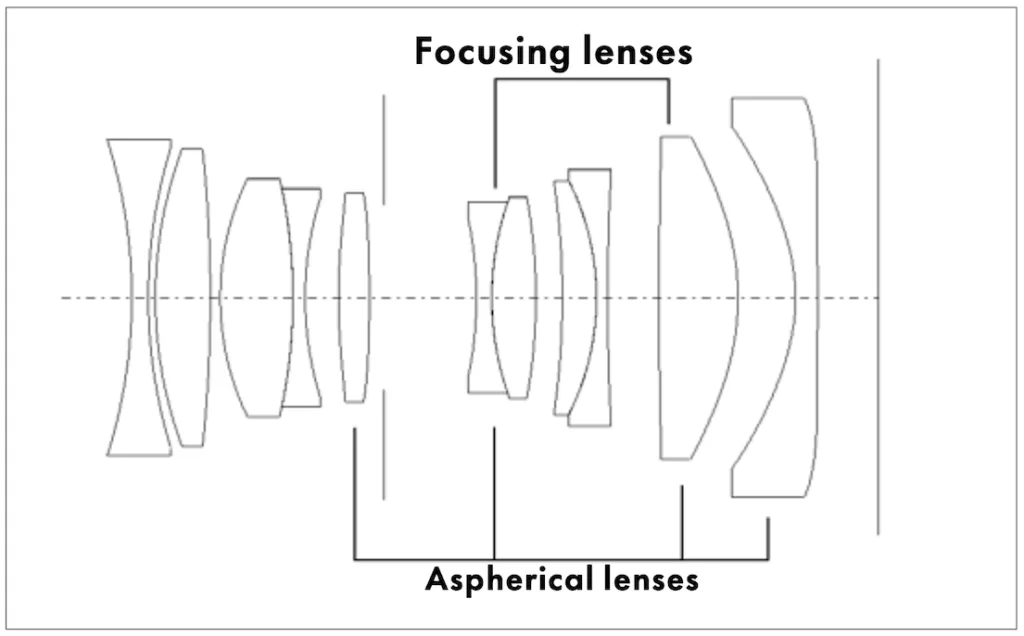
A look at the resulting MTF curves seems to confirm this. If these are correct, things won’t get much better.
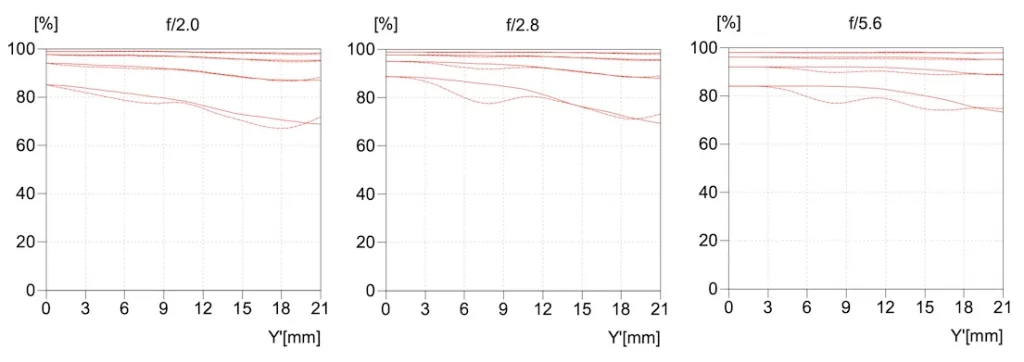
If you like, you can compare this with the MTF curves of the truly outstanding APO-Summicron SL 2.0/50mm, which I recently had the pleasure of testing briefly. Here you will find a few words about it. This is even more remarkable when you consider that the SL lens is twice as large – at least.
MTF curves and resolution data are one thing, the real imaging characteristics – i.e. the individual rendering – are another. After all, this is not about scientific measurements of light rays, but about photography – visually, artistically, emotionally. The question is whether the Summicrom 43 also delivers here.
You could already tell from the curves that the sharpness and (micro)contrast would be excellent. However, I don’t find this extraordinarily high sharpness unpleasant or clinically sterile. As with the aforementioned APO-Summicron SL 50mm, the overall image is harmonious. This is due to the rendering of the entire image, which is also exceptional with this lens. It renders beautifully and the sharpness fall-off – like the bokeh itself – is very, very nice.
I no longer have the APO-Summicron SL 50mm to hand. But I would say that the optical performance of this APO-Summicron on the Q3 43 is quite comparable – at least in real use. That’s really saying something!
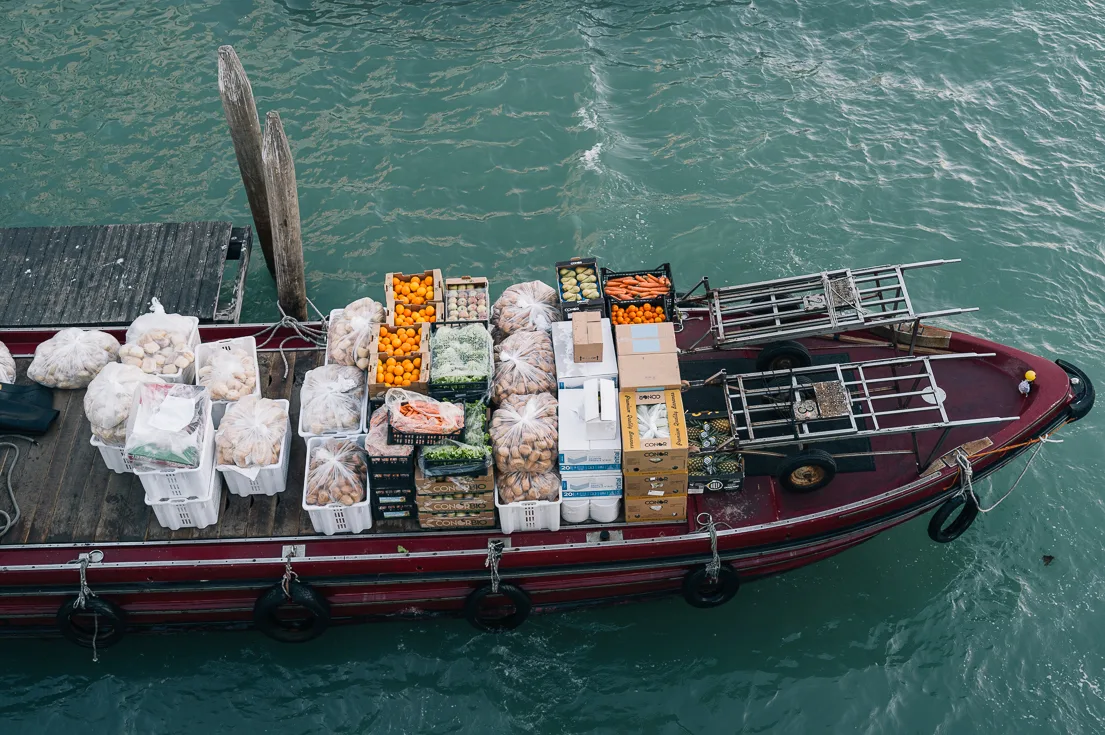
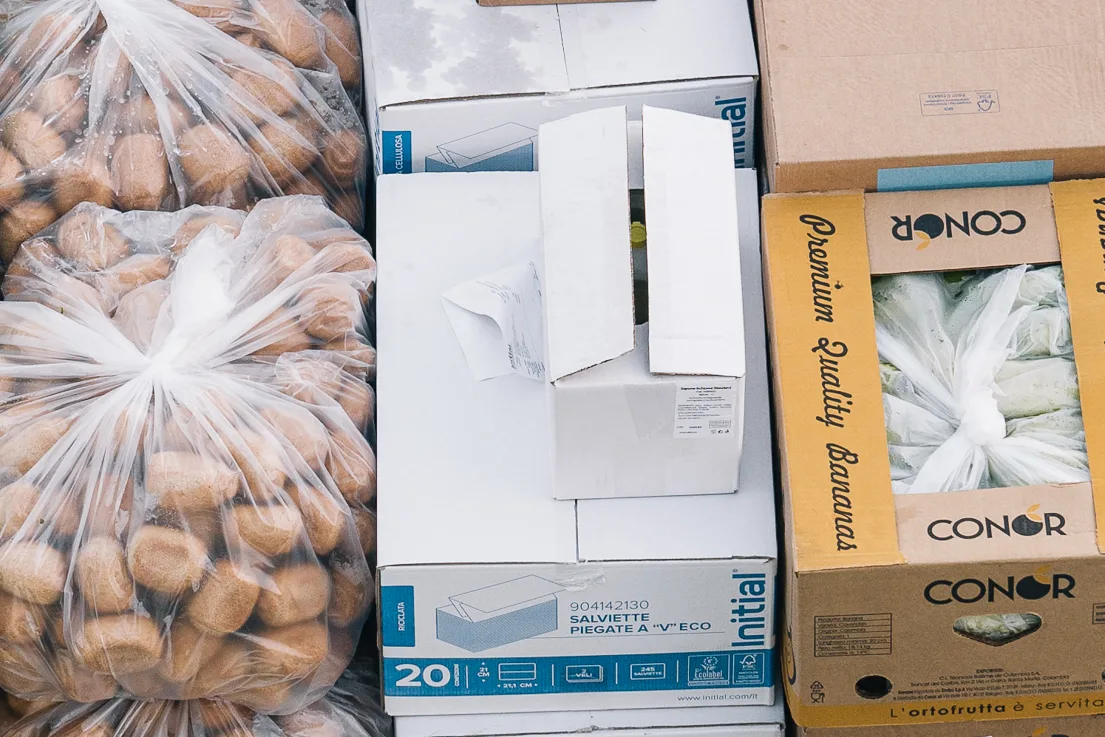
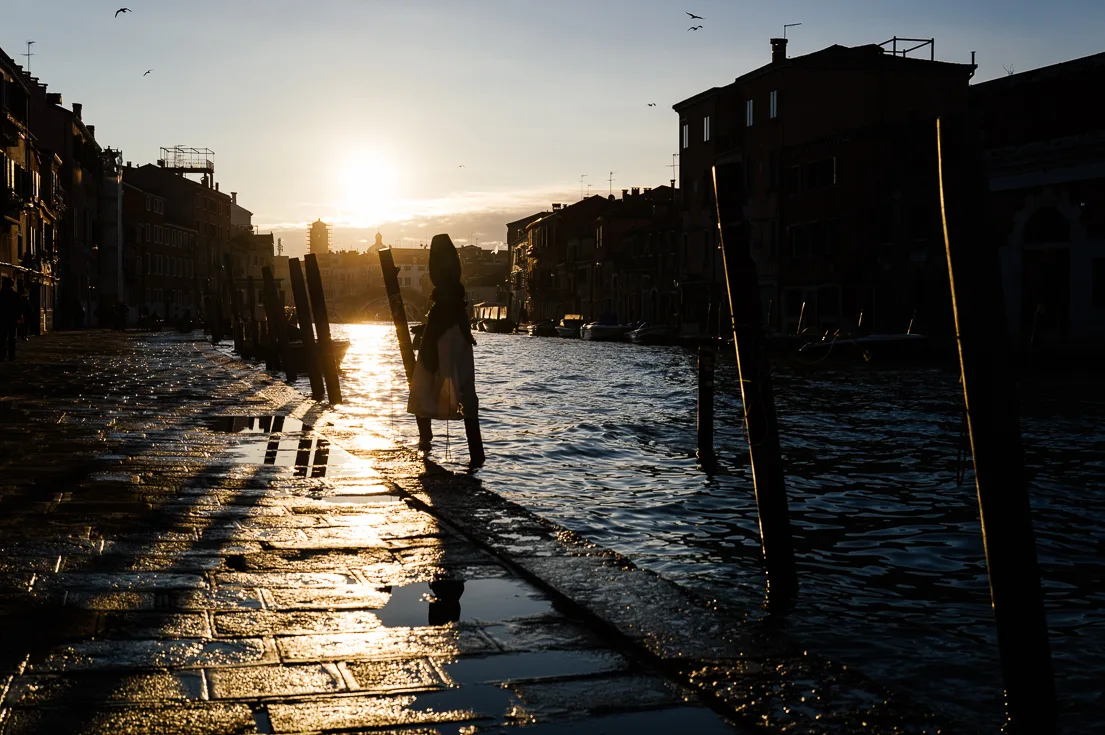
The bokeh is very pleasant and very smooth – if you like that kind of thing. Opinions are sometimes divided on this.
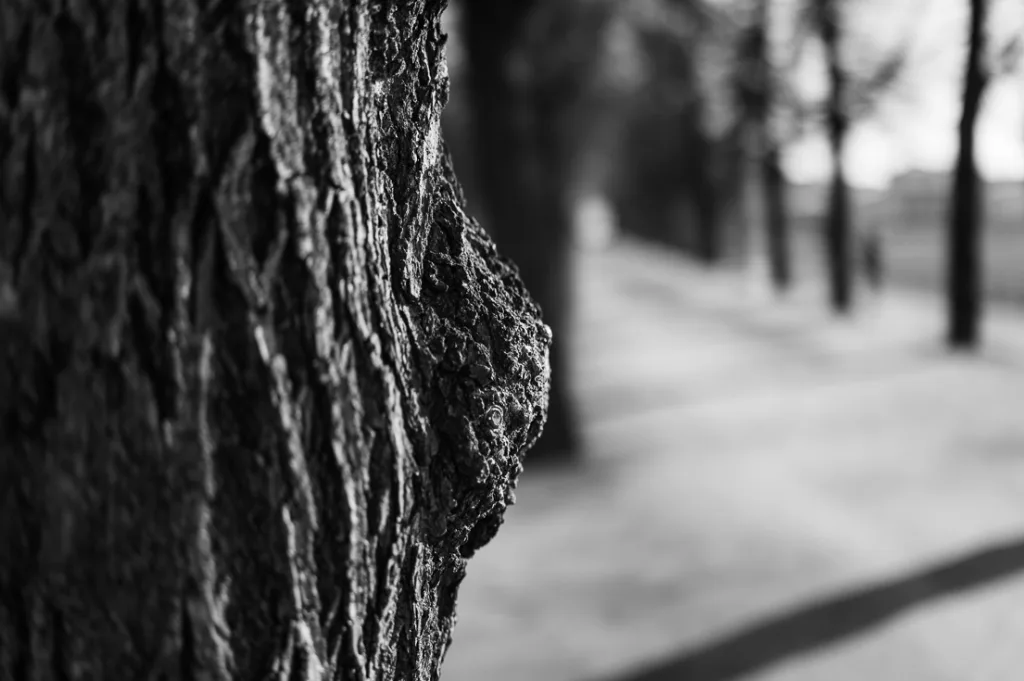

So, does it render dreamlike and extremely characteristic? No, it doesn’t… it’s not a vintage lens. It’s not an old Summicron M 35mm (neither ‘King of Bokeh’ nor ‘8 Elements’). It has no extremely lively bokeh and no extreme flares when photographed directly against the light. If you like and want something like this, you have to go for such old lenses – or corresponding replicas.
However, the Summicron 43 is by no means characterless or clinical. It simply renders more modern, certainly more perfect, but still very beautiful and well-balanced. It doesn’t look overly digital to me. For most situations, I prefer this to a vintage look.
Mechanics
Mechanically, there is not much to say. It’s like the Summicron 28mm on the other Qs, including the aperture ring, the focus tab and the macro setting. In fact, it looks almost exactly the same as the Summilux 28.
However, there are four small differences.
- The closest focusing distance is 0.3m for the 28mm lens and 0.6m for the 43mm lens – in the macro range, it is 0.17m and 0.27m respectively. However, the maximum magnification is almost the same.
- At least on my test model, the aperture ring does not feel quite as smooth and well damped as on the Summilux, and it also clicks a little more tinny. That could be due to the production spread, though. And it’s not really bad either, just… er, not so perfect.
- The shutter is a little louder than on the Q3 with the Summilux. It’s not dramatic, but if you’re used to the ‘normal’ Qs, you’ll notice it even without direct comparison.
- As with the 28mm of the Q3, the MF functionality for an AF lens is very nicely implemented, but definitely not like on the M lenses. In contrast to the 28mm lens, however, I think it is still a little more useful. This is because the way between 1m and infinity is significantly longer with the 43mm lens and can therefore be adjusted more finely. The difference in focal length compensates for this advantage to some extent, but still.
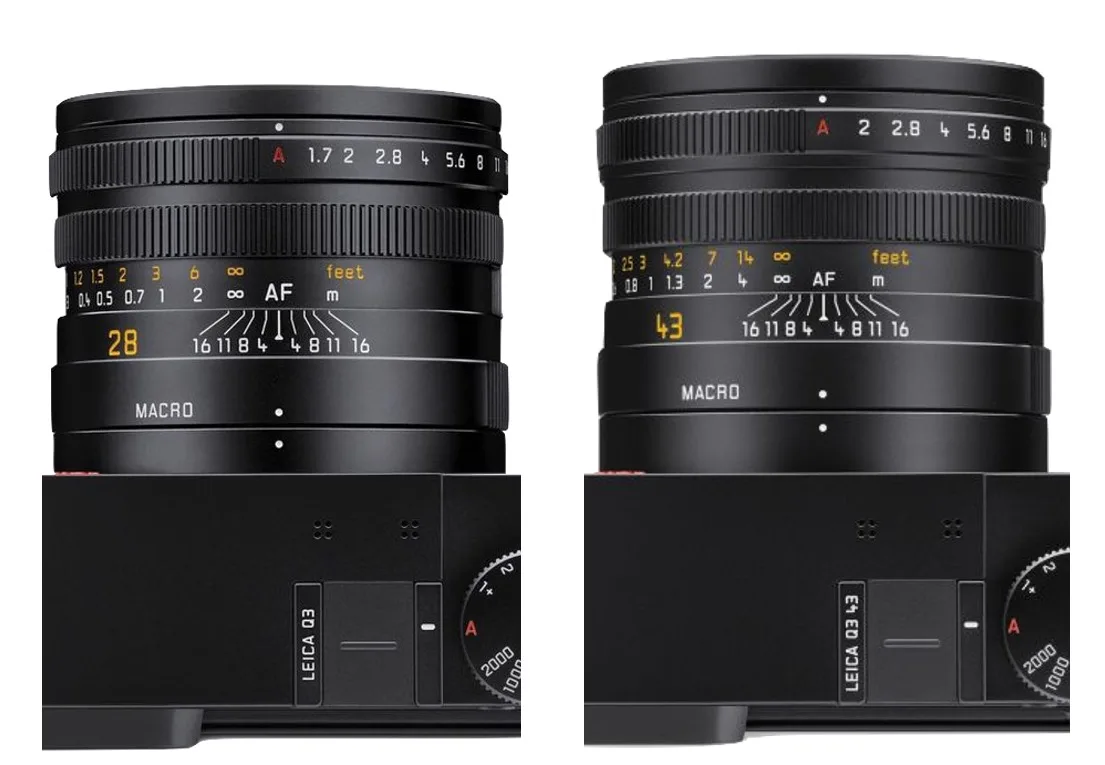
Autofocus
In terms of AF speed, both cameras are very similar. Perhaps the Q3 43 is a tad faster here. Due to the same technology and almost the same maximum aperture, the AF performance in low light is also the same for both – and could be still a bit better. AF-C and AF tracking, especially object tracking, also remain unchanged – and are therefore actually unusable. And I mean AF-C in general, not just tracking. Sorry Leica, but this permanent jittering of the EVF and the knocking noise in AF-C mode are simply unacceptable!
What I did notice, though, was that in spot mode (of the AF), the Q3 43 was less likely to miss the mark when it came to fine structures. I think this is simply because both cameras use the same number of pixels in the sensor as a basis for this AF field. At 43mm, the focus is more often on target because things are, logically, projected larger.
OIS
Since all Leica Q cameras use OIS (Optical Image Stabilisation) in the lens instead of a sensor with IBIS (In Body Image Stabilisation), the question naturally arises as to how good this is. Previously, the same OIS was used for Q, Q2 and Q3, and the only visible differences in effectiveness could at most be attributed to the different resolutions of the sensors. With the new lens, everything is different, of course. We have a longer focal length and a different optical system with a different OIS. How does this affect the image stabilisation?
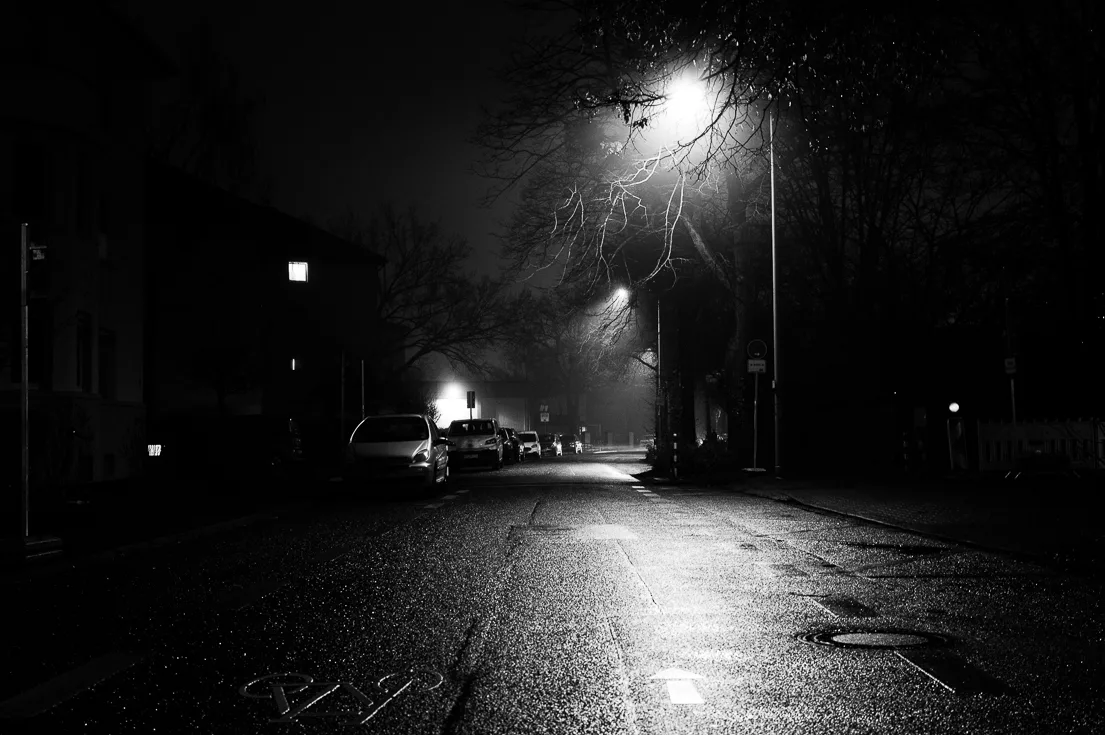
Without having done ‘scientific’ or generally more elaborate tests, I would say: the performance is about the same as with the ‘normal’ Q3 – but at a longer focal length. In my experience, you can mostly use 1/8 sec, and 1/15 sec is definitely quite safe. At 1/4 sec, I only rarely managed to get a reasonably sharp picture. I also feel that the OIS is not quite as effective as the IBIS on the SL3 with a 50mm lens.

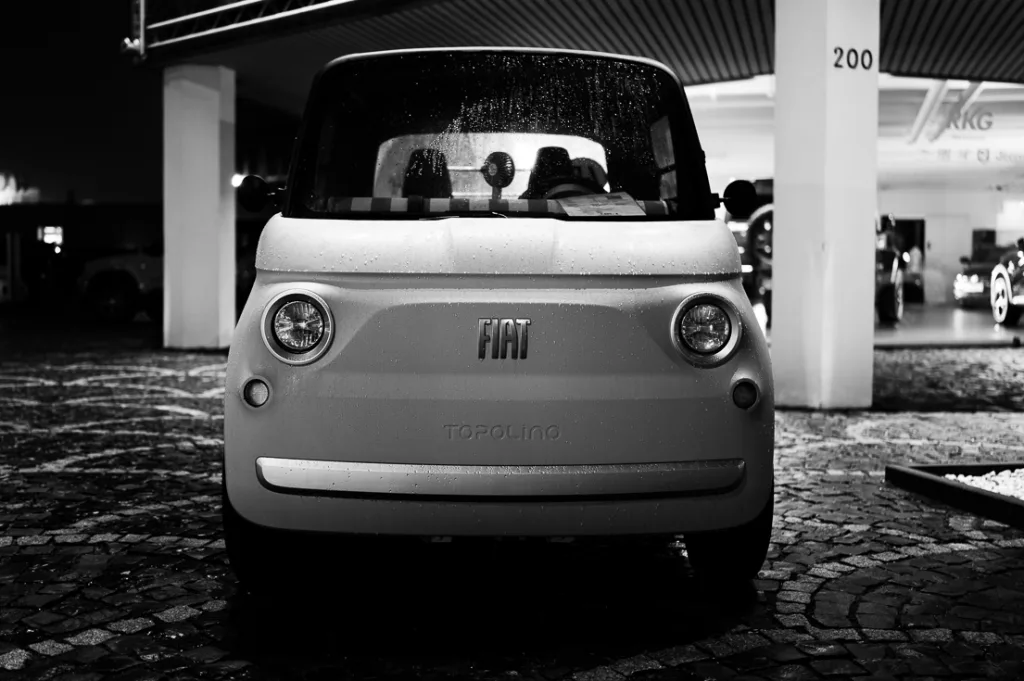
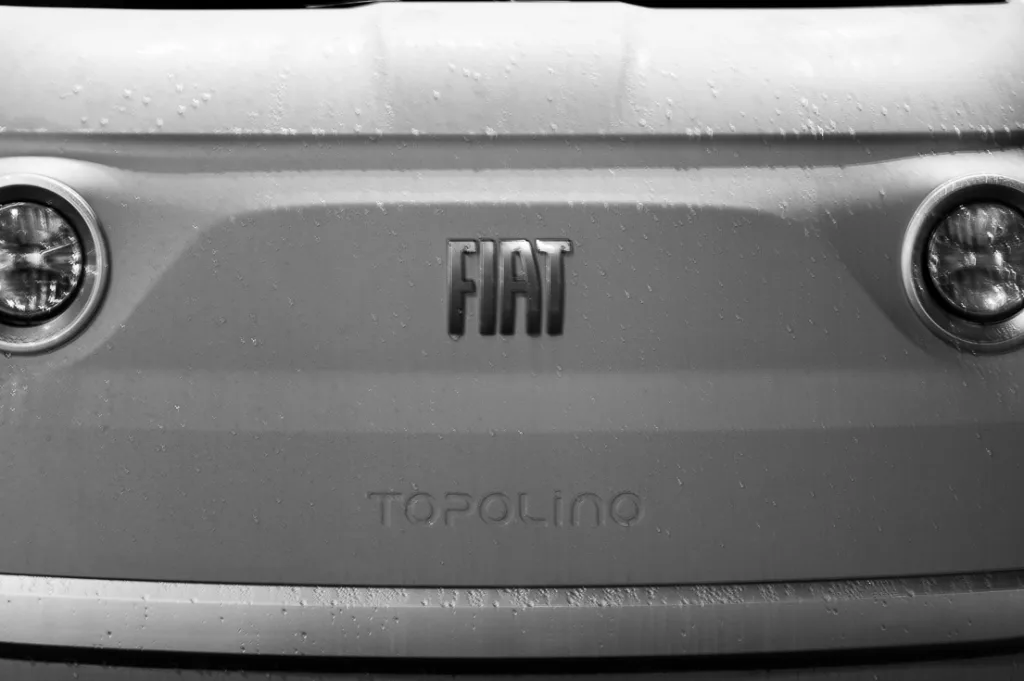
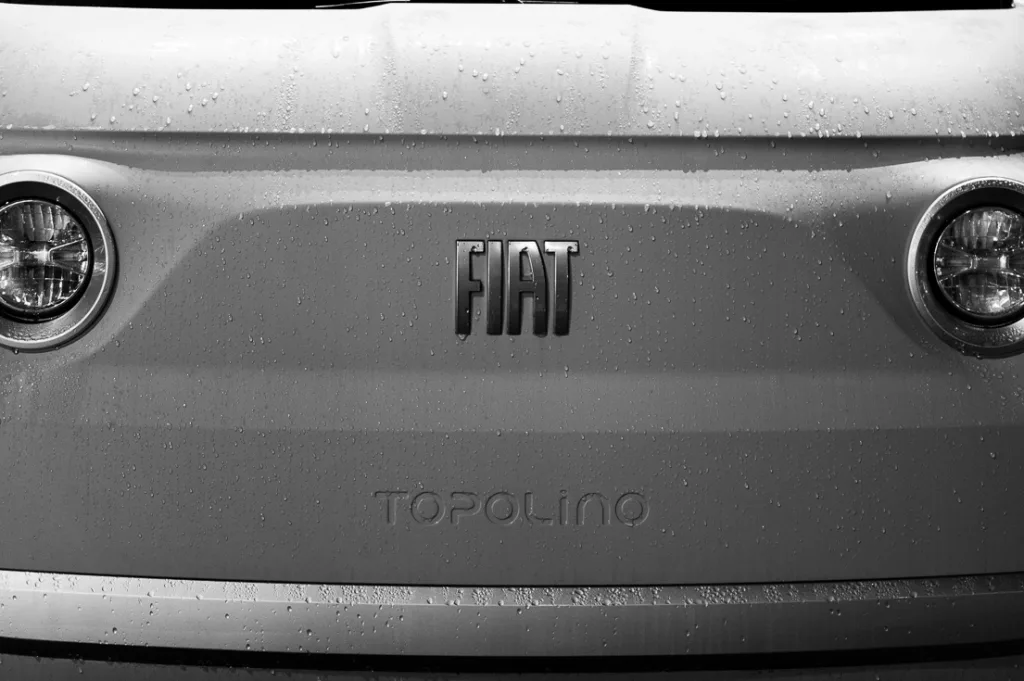
This is OK overall, but it is a bit below today’s best standards for stabilisation. You shouldn’t expect too much here, and OIS should certainly not be the decisive purchase criterion for a Q3 (43). But it’s good to have it at all. Leica M-cameras, unfortunately, have had to do without it entirely to date.
The size
The 43mm is approx. 5mm longer than the 28mm on the other Qs. In practice, this is not noticeable, and Leica has given the Q3 43 a different – shorter – lens hood. With this lens hood attached, the lenses are then the same size again – a little magic trick. However, Leica also got itself into a bit of a shitstorm with this ‘magic trick’, see ‘Filtergate’ below. 😉

All in all, the size of the Summicron 43 is still OK for me – around the limit of what I find acceptable for such a camera. I would have liked a slightly smaller lens, as with the 28mm, but I can live with it.
Filtergate
Yes, to all (the few) who may not have realised it yet: the macro mode of the Q3 43 cannot be activated with a filter and the (original) lens hood attached. This is because, in contrast to focussing, an entire lens group is pushed forwards and the lens lengthens. And there is no room for this with the shorter lens hood of the Q3 43.
So, either don’t use this lens hood, buy the sinfully expensive (and for me unsightly) round one from Leica or don’t use a filter in order to be able to use the macro mode. By the way, first manufacturers (e.g. Squarehood) are already planning or have a nice and even with filters functional version of the square shape.
OK, so that’s just for the sake of completeness. Did Leica know this beforehand? Sure, they even say so in the manual. Was that unwise? I don’t know, probably a bit – there’s just a bit of malice, especially from those who are not very friendly towards the company.
Personally, I couldn’t care less! I don’t normally have a filter on it anyway and use the lens hood as mechanical protection. And I’m glad – see above about the size – that the combination hasn’t become larger than with the Q3 28. But everyone has to decide that for themselves. Period.
Q3 and Q3 43 – Two sides of the same coin?
OK, now that we’ve got the technical stuff out of the way, let’s get to the real issue. What is the difference between the cameras in practice? What do you do better with the one and the other? How does your perspective and your photography itself change?
This is where it starts to get tricky for me. I’m such a wide-angle photographer that I first have to try to evaluate this lens myself from a different point of view. So, I’ve been trying to get used to the longer focal length on my little forays and seeing if and how I can see the world with it.
First difference – the field of view
The first difference is of course the obvious one – as briefly described above. The field of view is narrower and therefore, logically, there is ‘less’ in the picture at the same distance.
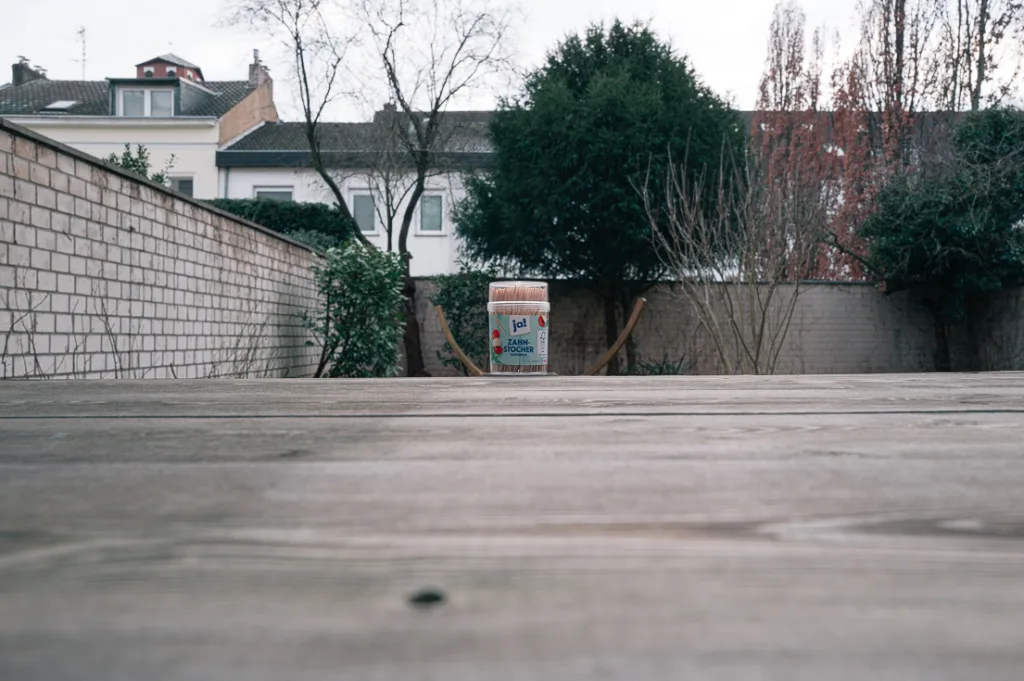
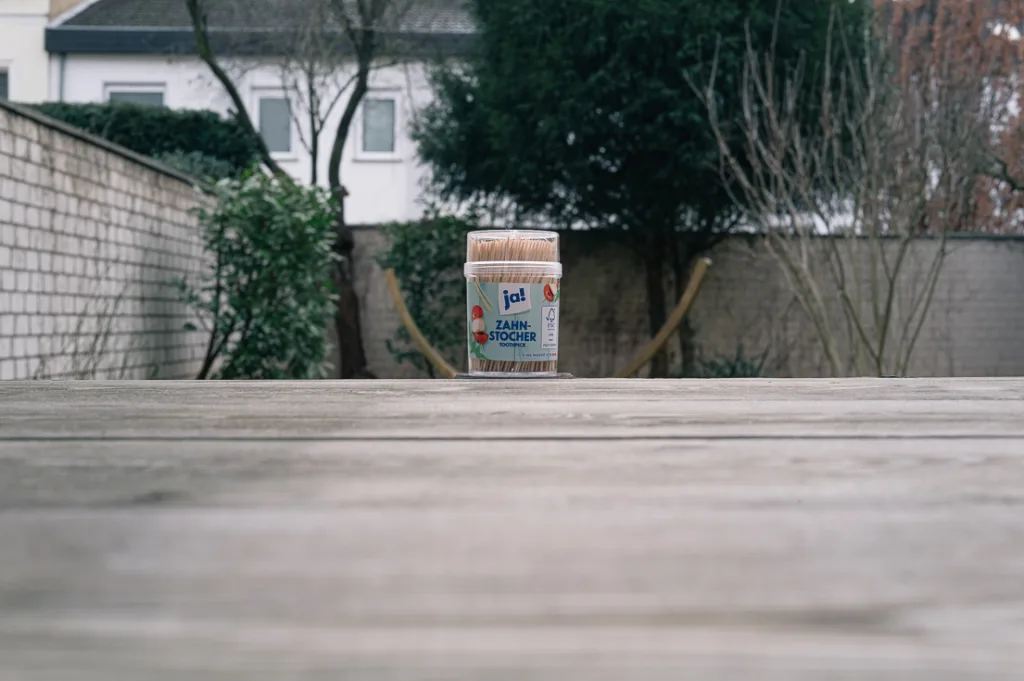
This naturally continues in the background, which is also very noticeable with small apertures and a large depth of field. For this reason, two images in which the main object is depicted in the same size also look very different.

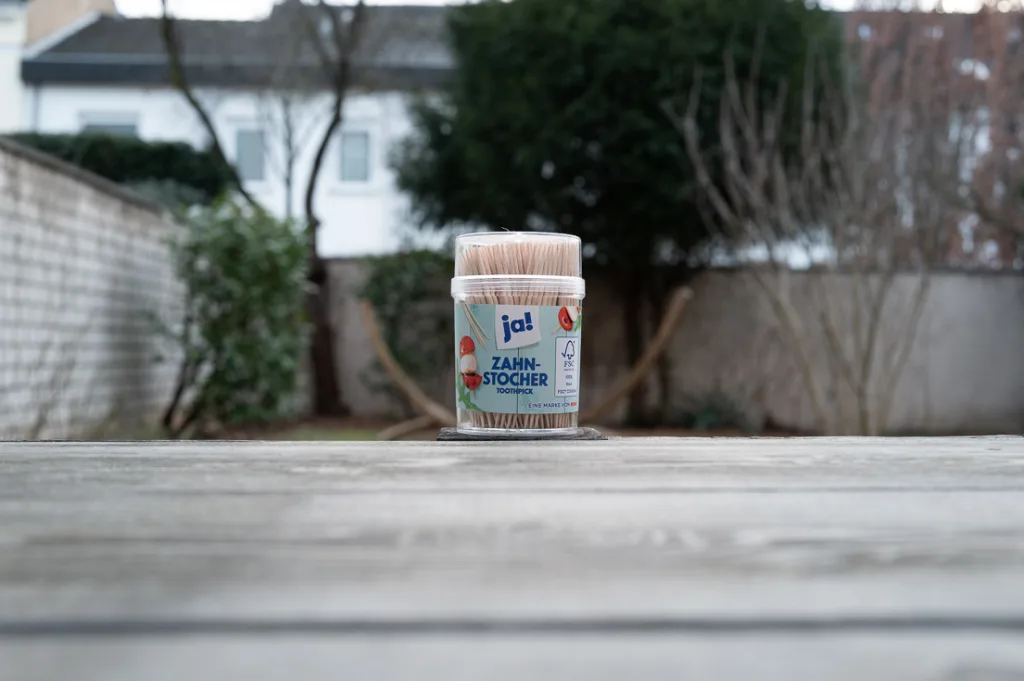
In practice, this naturally means that you simply shoot different images. It rarely works that pictures taken from the same position at 28mm and 43mm are ‘equally good’. The 28mm may lack an important foreground, the 43mm may not even get the actual subject in the picture. However, this does not simply mean that you have to use your feet more – if at all possible – to get a photo. You simply have to photograph in a somewhat different way.
Second difference – the perspective
The difference here is somewhat more complex – and is of course also related to the field of view. But I’ll try to explain my thoughts on this anyway.
With a 28mm you can be right in the middle of things, very close, even in direct physical contact with the subjects, part of the action – and the pictures still show the context and/or the environment. You can see where you are, who else is there, etc. You think you can almost touch the scene in the pictures.
Portraits tend to become environmental portraits – and other scenes become interior views of the scenes themselves.
That doesn’t work with 43mm, at least not in the same way. Sure, you could – if possible – go further away. But then you would just be next to things instead of in the middle of them.
The longer the focal length, the less the images appear as if you were part of it yourself. The perspective and the information become denser, but also more indirect and somehow less authentic – if that makes sense. I wanted to avoid using the famous Capa quote here too, but he’s (mostly) right.
If your pictures aren’t good enough, you’re not close enough.
Robert Capa
Anyway, to be able to photograph close enough, you often need a wide-angle lens.
I don’t have that many pictures with the 43mm at the moment to illustrate this. Maybe these two below, even if they are not ideal. But they show a bit the dilemma: If I want the surroundings, I’m far away. If I’m closer, the surroundings and the context are quickly missing.
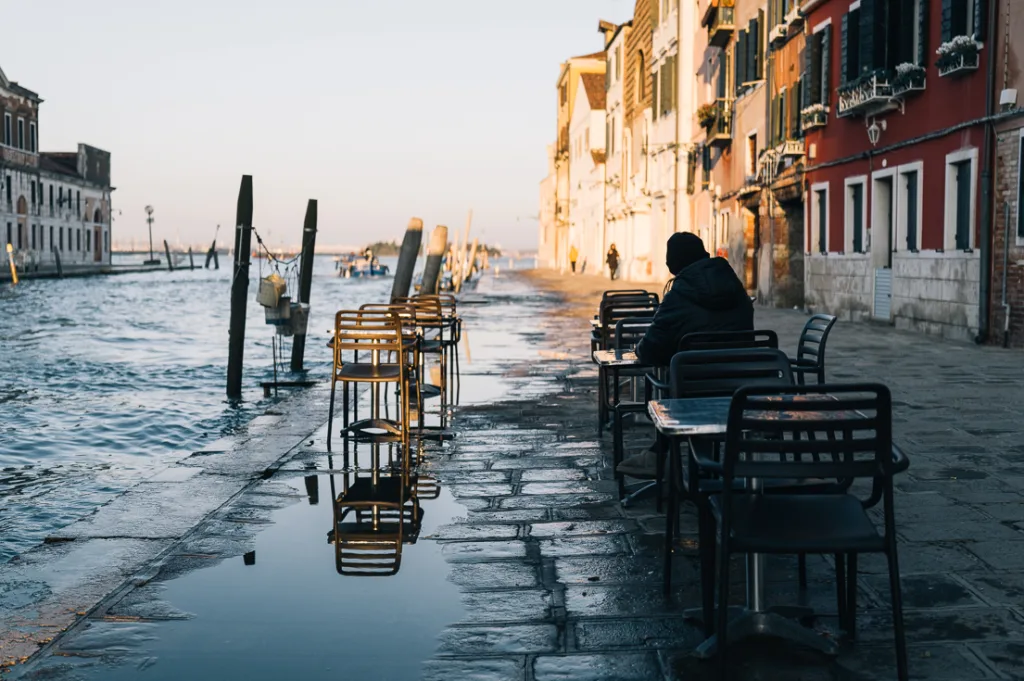
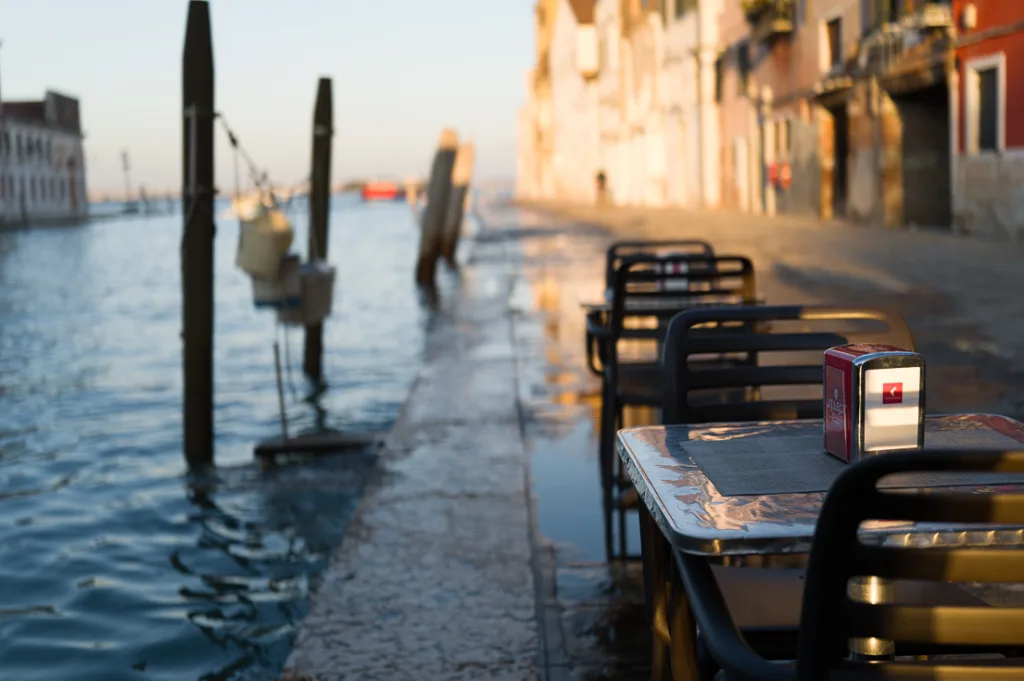
As I said, in the absence of good examples with the Q3 43, I’m going to reach into my archives and pull out a few older pictures that were taken with a 50mm lens (equivalent). Scenes where I was actually in the middle of what was happening.
Is it clear what I mean? Either you’re in the middle of it, but then the context – and often enough arms, legs and heads – are cut off. Or the image is so dense, unsorted and without layers that it is difficult for the eye to survey the scene. Not all of these photos have to be bad – Cartier-Bresson used a 50mm lens most of the time throughout his career. But at least I rarely get very convincing results with it for my type of photography.
The alternative is to go further afield – but then you quickly become kind of a small-scale paparazzo.
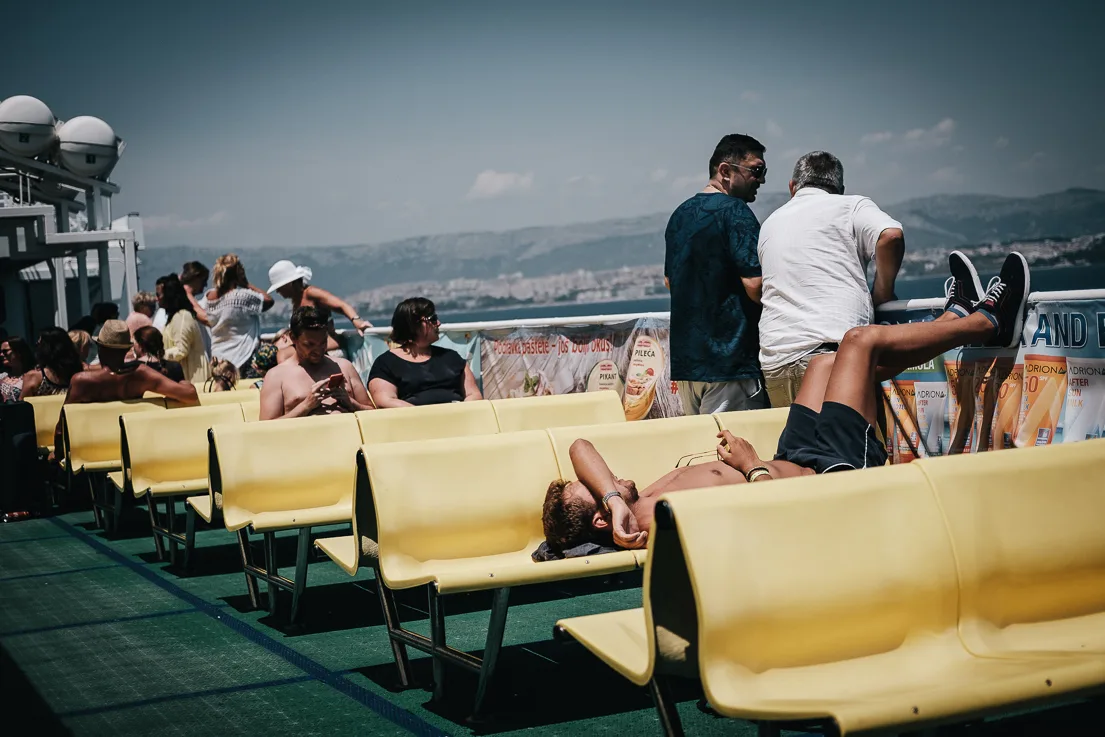
With a little luck, patience or attention and reactivity, you can sometimes make something out of it – if interesting elements appear. Like the couple with the selfie stick or the man who looks at me, (perhaps) a little annoyed.
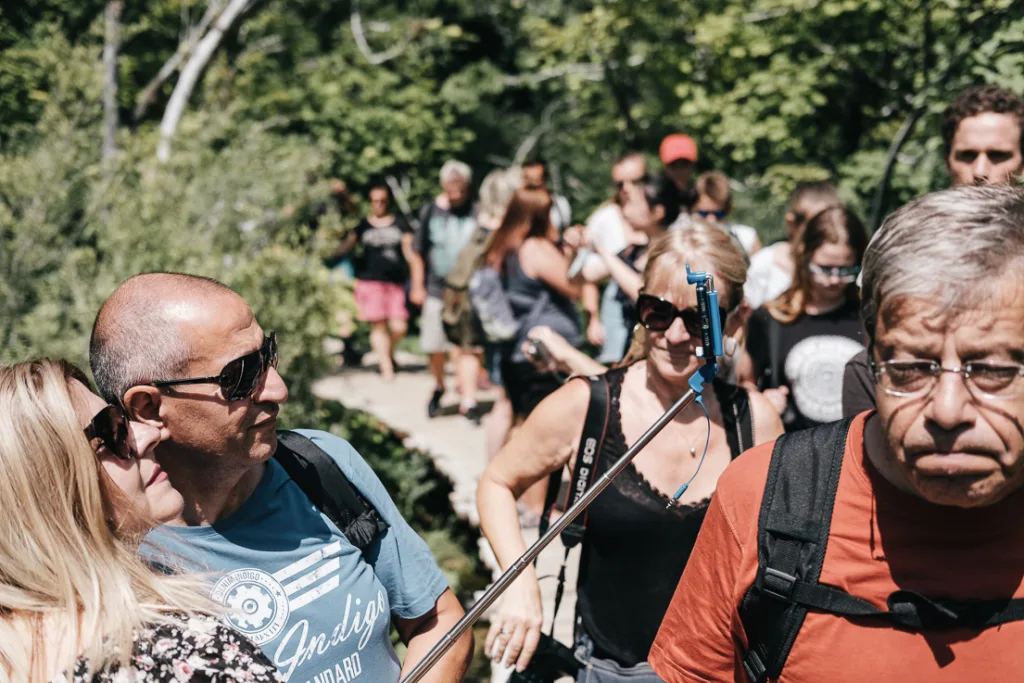
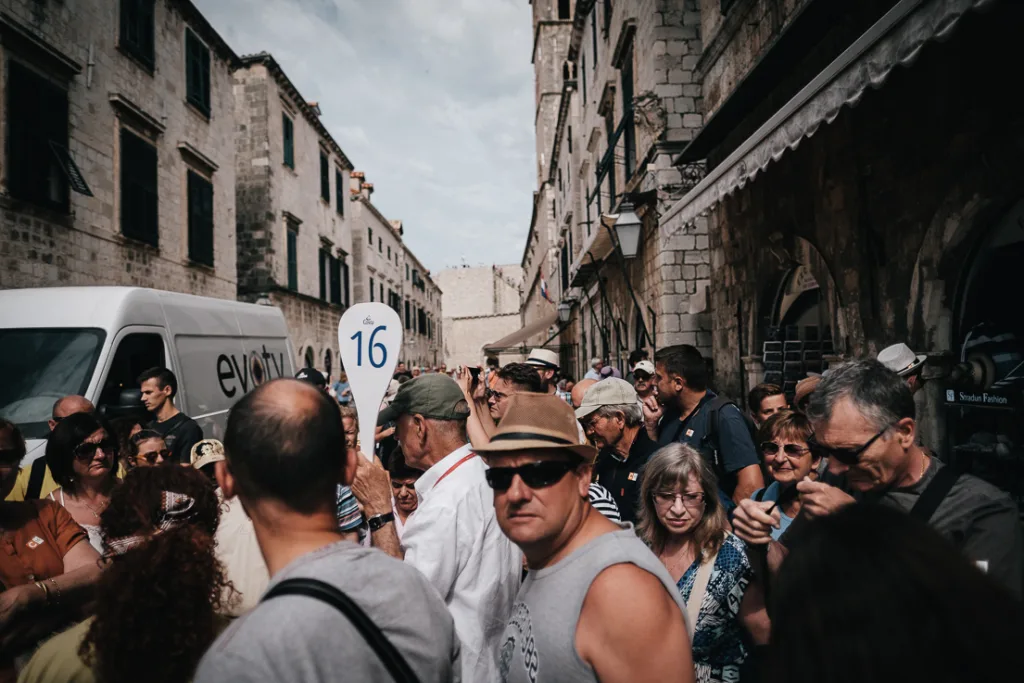
But I find that difficult… and I don’t think it always works. And for me, as I’ve already said, the pictures always have a bit of a paparazzo look. It has something of ‘stealing’ about it. Others may feel differently, of course…
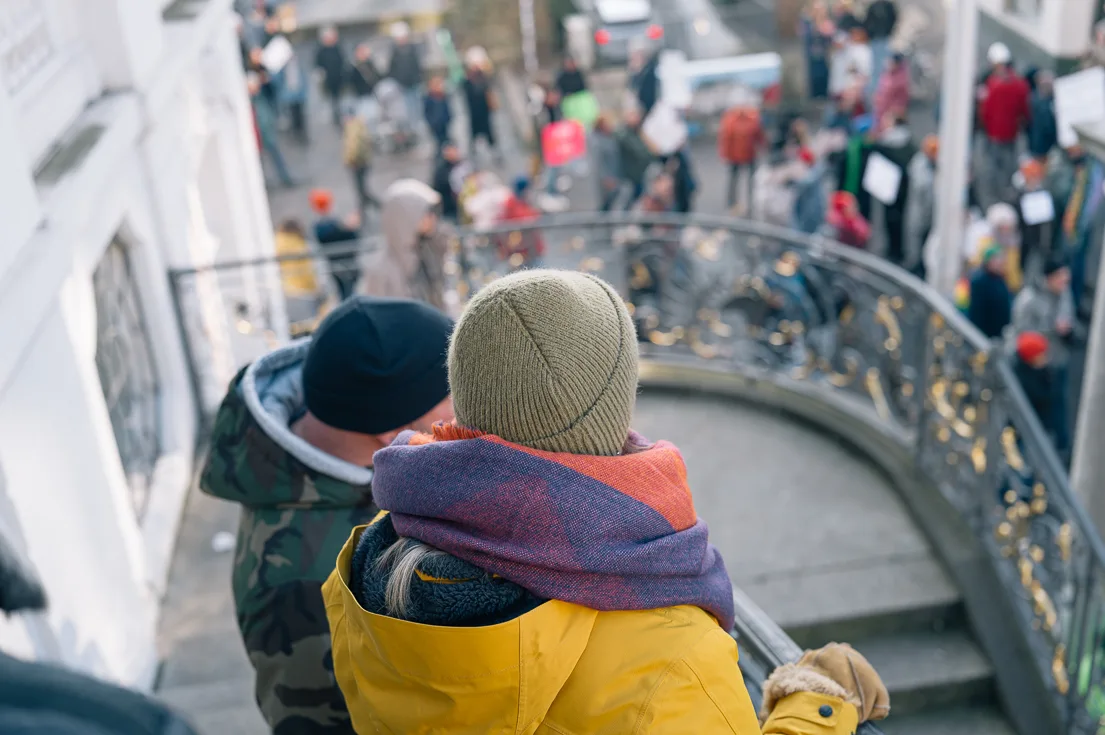
Sometimes there is still another way to resolve this contradiction. The foreground – in which the photographer and parts of the subject are located – must be far enough away from the background. Then you also get two or more layers, although this rarely works with a large depth of field – and is therefore only suitable for certain images.

OK, let’s sum it up: both lenses can be used to tell stories. But not the same and – for me personally – not equally suitable. I prefer the 28mm focal length for this.
As said, with the 28mm, the main subject is placed more in the context of the surroundings. I usually find this more interesting myself, but it’s also a bit more challenging at first, as it usually requires a lot more attention to the composition of the image. This is also one reason why many people – especially photography beginners – find it more difficult to use a wide-angle lens. For me, it’s now rather the other way round…
The 43mm, on the other hand, is more suitable for a condensed visual narrative – for focussing on a few details, for example. Unfortunately, that’s not always my strong point.
Third difference – the rendering
The longer focal length leads – to put it in very simplified technical terms – to a different fall-off in sharpness and to a shallower depth of field.
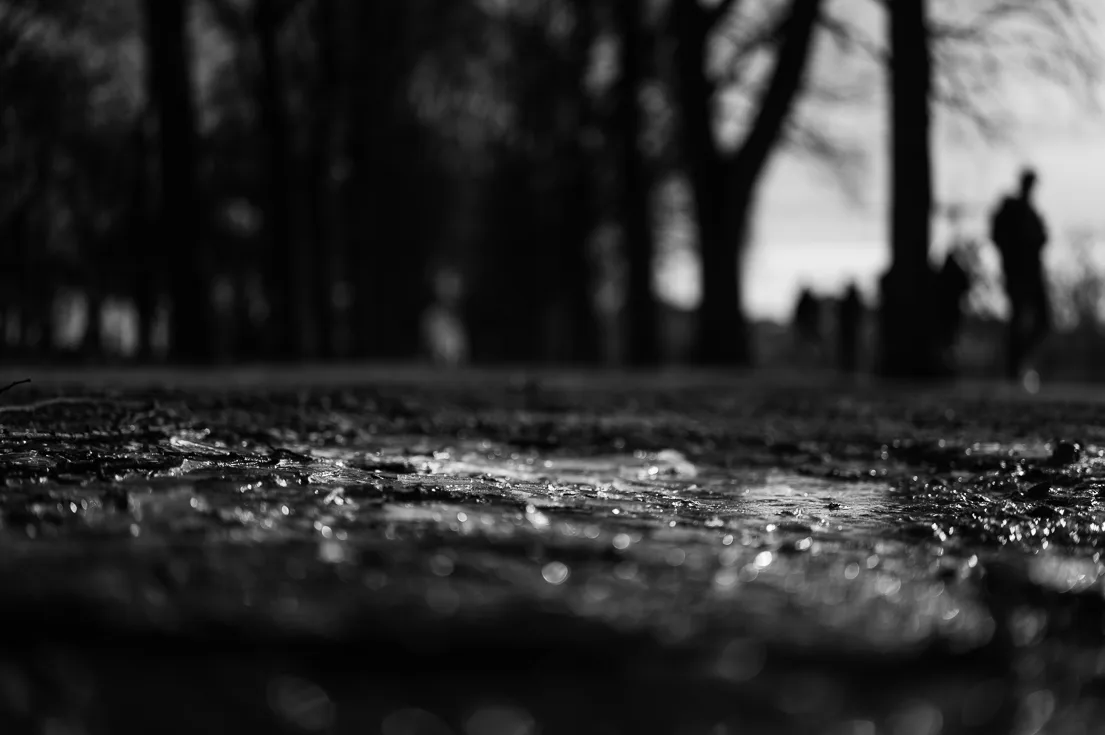
This has a major influence on the composition of the image. Of course, with smaller apertures, you can also achieve a fairly adequate depth of field with the 43mm. But the physics of optics naturally has its laws and its limits.
With a focal length of 28mm, the hyperfocal distance at f/11 is mathematically 2.4m and the close-up point is 1.2m. At a focal length of 43mm this is already 5.65m and 2.82m respectively – that’s a big difference. Both for the possibility of zone focussing and – this is my point here – for the rendering of the images. Even if the light is very good and you could stop down the 43mm quite wide, the fall-off in sharpness is significantly more visible in the image.
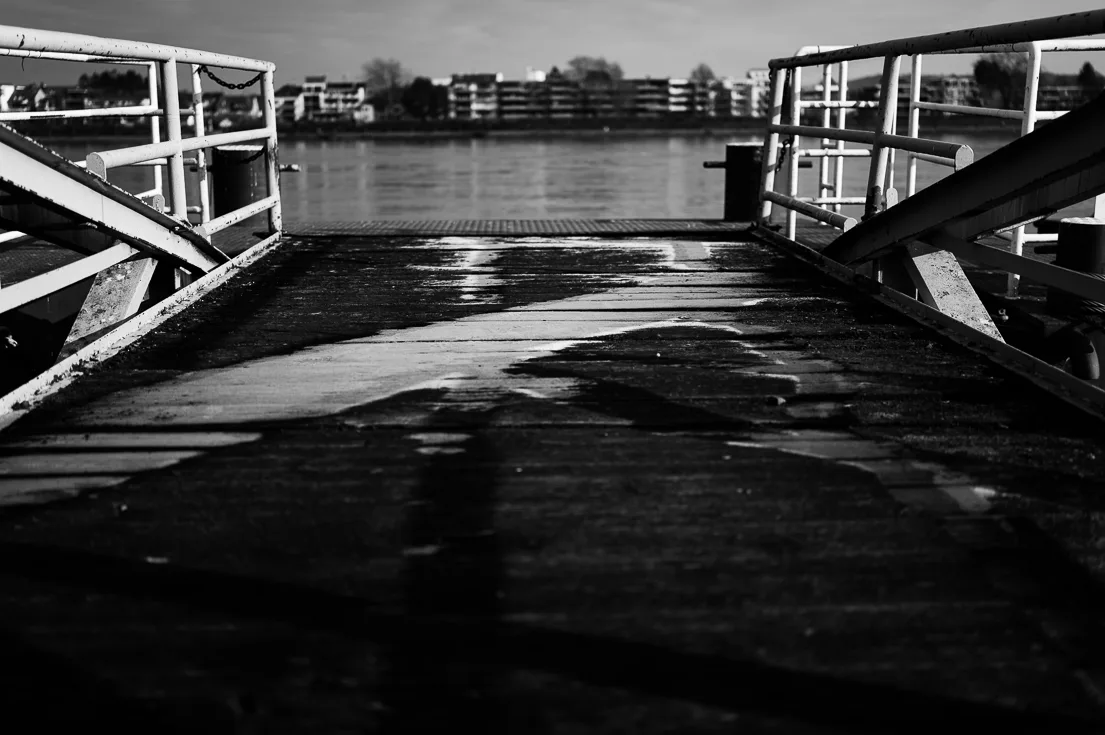

Generally speaking, you have to work more with a larger blurred area in the image – or reduce the distance between the image layers.
Conclusions
I have essentially two conclusions – one more personal and one general.
For me personally, the Leica Q3 43 would be unsuitable as a stand-alone camera. I find 28mm to be by far the more versatile focal length for what I do photographically. The 43mm would limit me so much that I would have to reach for my iPhone all the time. So, it doesn’t make sense. Others will see it differently – and do, as you can read and see on the net. If you can’t do much with 28mm and prefer longer focal lengths, you could really appreciate the Q3 43. Whether it works as the sole camera is up to you to decide.
Generally speaking and leaving aside my preference for a different focal length, the Q3 43 is a very exciting camera. It has everything that the Q3 has, which I really appreciate. And if 43mm is the right focal length for you, you should be very satisfied. The APO-Summicron 43mm is sensational! In terms of image quality and characteristics, I consider it to be on the same level as an APO-Summicron SL 50mm. So, it really plays in the premier league. And together with the sensor, you have a combination at an extremely high level in terms of image quality.
The Q3 43 is certainly the Q that many have been waiting for. Only I am not so much…
What could that mean for you?
Of course I don’t know that. Everyone has to know or try out for themselves which focal length suits them better. I just wanted to make it clear that the difference is greater than the 15mm focal length suggests. Better photographers than I may disagree with me, but for me both cameras are made for quite different photographic and narrative approaches.
If you are the type for the slightly longer focal length, then the Q3 43 could be perfect for you. It’s a damn good camera with an exceptionally good lens.
What does that mean for me?
Um, yeah, well… what can I say? I didn’t just try out the camera out of curiosity, but also to clarify the question of whether it could make sense for me as a second camera alongside the classic Q3.
As fascinated as I am by the Q3 43 and especially by this outstanding APO-Summicron 43, I have to ask myself how often I would use this camera. In Venice, I quickly realised that I would rarely take it alone. I simply see in 28mm. And of course, I would never walk around on the street with two cameras – no matter which ones. It might be interesting to go out on the streets with just the Q3 43, depending on my mood. But it would be an exception – for a walk or something.
What remains would be the originally intended role of the Q3 43 as an additional camera for certain projects – for portraits, details, etc. Phew, of course that’s a pretty extreme consideration. I would feel like I had thousands of Euros lying around on my shelf most of the time. OK, that can also happen with an M lens that you rarely use. But I don’t own an M and therefore no lenses for it.
A possible alternative – in a similar size, quality and form factor – would be a Leica M11 with a 35mm Summicron. Even if I didn’t take the variant with the APO-Summicron M 35mm (€16840 in total) but ‘only’ the normal Summicron, I would still have to put €12240 on the table. It is often said that the prices of Leica should not be discussed. I don’t want to discuss either, but from my point of view, these are dimensions that are simply very, very difficult for me to justify. If anything, the only conceivable option for me would be the second-hand market.
Too bad, Leica, the M experience could soon be reserved only for the rich – if it isn’t already the case. Hopefully at least for the rich – but still – photographers…
My thoughts on this are not yet clear… and I still have a few months to go, during which the normal Q3 should remain the only camera anyway.
There is always light somewhere – go out and shoot!
























Once again, a very exciting article from you, Pete! I haven’t had any experience with the Leica Q3 43 yet, but you’re speaking straight to my soul, and I can totally relate. I, too, would always prefer the 28mm as a stand-alone lens. It allows me to include the surroundings and gives me a different way of being “in the middle of it all” – just as you describe. On my Leica M, I often catch myself using the 25mm (from Zeiss – and therefore also for us “non-wealthy” folks), as it lets me push what you describe even further, while still being very compatible with 35/40/50mm. Thank you for another fantastic article!
Florian
Hi Florian,
thanks for reading and for your (many) kind words! I thought we might be on the same wavelength. Although I can imagine that others also manage cool documentaries with 43mm. For me, however, it’s nothing… it would be cool as a portrait camera, but to use it only for that would be casting pearls before swine… 😉
Let’s stay in touch about Naples…
Peter
I am intrigued by the Q3 43, and to date have never owned any Leica (Schade). My current gear is a 1962 Rolleiflex 2.8, Fuji XH2, and my 95% of the time camera, my beloved Fuji X100V. I “see” in 35mm terms, but am very curious if 43mm could work for me. On the Q3, for my work (accomplished amateur) the drawbacks are no built-in flash (X100 flash is amazing) and no fuji JPG film simulations. My X100 is broken, going to the US plant for evaluation. If not fixable, next camera will be the X100VI, or ???? a Leica???
Hi Terrie,
thanks for reading! First of all, I wish you that your X100V can be repaired. It is and remains a great camera! Of course, I can’t say whether a Q3 43 is right for you? Could you borrow one somewhere? At that price, you should probably be sure whether it’s right for you.
Regards,
Peter
Excellent advice, vielen Dank!
😉
Ten years ago I had to trade my X100S for gear that would better earn its keep. Needs must. It remains one of the most inspiring digital camera I’ve owned. Maybe nostalgia?
When I went back to full time amateur, sold everything and skimmed down to just a Leica Q2 – Leica ambition realised. Beautiful in every way and up there with the X100 for inspiration. I just wanted to use it and to see the (flawless) results.
That said, I’ve been seduced by the flip screen of the Q3 series and traded for the Q3 43. I often felt I was achieving snapshots with the Q2, rather than ‘compositions’. I now think the photographer is the problem and recognise the sentiments in Peter’s article. I should have just bought another X100 – or kept the Q2 and improved me.
Steve, don’t be so hard on yourself! 😉
It’s OK to try something new, and a Q3 – regardless of the model – definitely has a few advantages, even over an X100V(I). And you can continue to improve with the Q3 43. What I just wanted to express in my article is that the two focal lengths of the cameras are very different. I think that these are really cameras for two different types of photographers…
Peter
Thanks for an excellent article and a fair and accurate review. For me, owning both the Q3 and the new 43 serve a specific purpose. I don’t mind walking around with two cameras. When I shot film for many years, I carried two 35 mm cameras, one with color, slide, film, and one with black-and-white film. There were also times when I would shoot black-and-white film in both, but have two primes on the cameras, one a wide angle and the other a portrait length lens. Carrying two cameras was never a problem for me. Now, walking around with a Q3, I’m aware that, being a portrait photographer as well as a street photographer, I sometimes wish I had a longer focal length. Now, I walk with both of those Qs, and because of the 60 megapixel sensors, I can take portraits with the new 43 and both “see and capture” a large enough image that is a crop at 75 mm. It’s working out great for me. The alternative would be to walk around with a larger and heavier second camera, probably with a zoom or fixed 75 or 85 mm lens. Using the two. Qs instead is a much better solution for me. Again, this is my circumstance, my preference, and I’m aware that everyone else’s mileage may vary.
Hi Fran,
thanks for your detailed comment. It also shows how great it is that we are all different. Something I can hardly imagine (walking around with two cameras) is obviously no problem for you. I myself had also considered maybe both cameras as the only solution. But I’m not quite convinced. Not because it wouldn’t be enough for me – that would be more than OK. But because I’m afraid I would almost never use the 43. Even though it’s a great camera…
Cheers,
Peter
Great article. I own a Leica M262. Love the simplicity of it especially being so close to being a film camera. Definitely makes me slow down. Thanks for sharing.
Hi Dawn,
thanks for your comment. And yes, the whole M thing is a completely different matter. I’m still unclear and undecided how I feel about it – but the cameras are certainly fascinatingly different.
Peter
Hi Peter,
As others have said, thanks for a great review. I always look forward to any review of yours as they reflect a real word experience. I’ve had the Q2 for almost a year now and it has become my main camera. But as much as I love the Q2, there have been situations where I longed for a longer focal length. Thanks to a very generous wife, I received a Q3 43 for Christmas. The weather here has been so coldsince then due to a Polar Vortex that I’ve only gotten out a few times, but I can see the issues you raise in your review. So we’ll see how it goes. You’ve given me some things to think about.
Hi Rene,
Thank you for your comment. It’s interesting that I got you thinking. You’ve actually compared the focal lengths with one of the Qs yourself. I’m curious to see what the result will look like after a while. The cold will be gone at some point and then you can take it outside…
Peter
P.S. … and yes, you seem to have a very generous wife ;-).
That’s why we’ve been married for 50 years 🙂
Rene
Hallo Peter, ich schaue immer wieder mal vorbei und entdecke erfreulicherweise immer wieder interessante Artikel über deine Erfahrungen.
An der Q3 28 finde ich, das Besondere ist der Bildlook von f1,7 bei 28mm, auch genau in DER Kombination. Ich hatte bei Sony das 35 f1,4 und das 24 f1,4. Diese Kombis war mir jedoch zu schwer und zu groß, auch wenn ich den Look mochte. Die Q3 28 vereint für mich alle optischen Eigenschaften, die ich mag vom Bildlook her in diesem kompakten Format. Da mag das APO noch so toll sein, ich bin irgendwie ein Fan von Weitwinkel mit geringer Tiefenschärfe.
Und ich bin ewig lang um die Q3 herumgeeiert. Habe andere Kameramarken und andere Kombinationen ausprobiert, die ähnliche optische Eigenschaften haben, aber alle waren entweder vom Bildlook her nur ein Kompromiss (zu geringe Tiefenschärfe und/oder nicht weitwinklig genug für mich zB X100VI, X-Pro3 mit 18/2) oder zu groß/schwer (zB X-T5 mit 18/1,4, Sony mit o.g. etc).
Jedefalls wusste ich, was ich eigentlich will von den optischen Eigenschaften her und die Q3 28 ist zumindest für mich die Inkarnation aller Dinge, die ich mir aus meinen Erfahrungen “zusammengesucht” habe.
– Relativ weitwinklig mit 28mm
– Geringe Tiefenschärfe durch Offenblende f1,7 bei Vollformat
– Kompakt
– Stabi
– Sucher & Klappdisplay
– AF und MF in EINEM Objektiv, mit einem MF, der sich “echt” anfühlt (also nicht dieses typische ewige focus-by-wire-drehen)
– Ansatzweise makrofähig
Hi Dirk,
schön, dass Du ab und zu vorbeischaust und noch schöner, dass Du dabei auch was interessantes findest. So weiß ich, dass ich den Quatsch nicht nur für mich schreibe… 😉
Und: lustige Zusammenfassung unten. Da sagst Du in ein paar Spiegelstrichen, was ich in drei elend langen Artikel sage :-)))
Ne, im Ernst, genauso sehe ich das auch. “Inkarnation aller Dinge” trifft für mich den Nagel auf den Kopf. Und genau wie Du habe ich diese (oder eine sehr ähnliche) Kombination von Nikon über Olympus bis Fujifilm auch schon probiert. War auch immer völlig OK, aber OK ist eben nicht perfekt. Und die Kombi von Optik und Sensor der Q3 ist für mich wirklich perfekt…
VG Peter
…aber Deine “drei elend langen Artikel” machen wesentlich mehr Spaß zu lesen, als meine drögen paar Spiegelstriche 😀
Also Danke dafür und LG Dirk
🙏
[…] Update 12.05.2024: Decision made 😉 | 27.08.2024: Some thoughts after six month with the Q3 | 08.10.2024: Off-topic – First thoughts on the Leica SL3 | 23.01.2025: Some thoughts on the Leica Q3 43 […]
Thank you!
As 35 is my most used focal length on the M, followed by 90, and as I had the Q2 and never loved it, the Q3 43 looks like my best choice. I’ll keep the M 28 Summicron Asph for this times when it’s needed, but can see the 43 as a long term companion.
Many thanks for an excellent, unbiased article.
Chris
Hi Chris,
thanks for reading and for the nice words. It’s always exciting to see that others have different preferences for focal lengths. I like the lens, but unfortunately I can’t do enough with it…
Peter
[…] as far as I can see a medium-term need for a system camera. I also considered combining it with a Leica Q3 43. That may sound totally stupid in some respects. Why two identical cameras with different lenses […]
I have found this post exactly for this reason, to make up my mind about the Q343…I have shoot for three years now with a Q2 that I recently sold, since I wanted something more “narrow”…I noticed I always cropped (not too much just a little) to arrive to a more 35…but then looking back at my archive I had pictures taken just with 28 or 24, Q, Q2, Yashica analogue, iPhone, Fuji…and this it means more or less 25 years of 24/28 focal length…So now I am back at square one…I have at home a Sl2-s with a sigma 35, but between the weight and the size I know already I will rarely go out and about with that…so tomorrow it will be on the way back to the store and a q3 will be on my shoulder soon…thank you for your effort.
Hi Matteo,
thanks for reading and for your kind words. I’m always happy when what I write here makes people think – even if that’s not the (main) reason I write. And it’s exciting that you’re going back to a Q(3) with 28mm. For me, the 43 mm really isn’t right as a first camera, and two Qs is somehow too crazy. Have fun with your new Q…
All the best,
Peter
Thank you for such a beautiful article. The photos shown as examples really illustrated the difference that I couldn’t see anywhere else.
You’ve helped me made my decision.
Hi Kelvin,
Thank you very much for the kind praise, and I’m glad I could help. Now I’m curious to know what you decided in the end.
By the way, Nick Reigns from Leica Camera Australia made a video with very similar content a few weeks after me – but on the Leica Global channel on YouTube. Take a look, it’s about two months old. If I wasn’t sure that he definitely doesn’t know my blog, I’d say he copied it 🙂
Peter
Thank you for an enlightening take on the two cameras. I just acquired the 43 and on several outings have found to be a bit narrow for my taste. I do see this as an excellent option as a portrait camera and as such will add the 28 to my gear for the landscape work I so love. For me having two cameras has been a must as a wedding photographer for 20 years. I found the two will complement each other based on the event I undertake. Cheers
Hi Stan,
Thanks for your comment. I had also thought about using both cameras in parallel. But for me, it doesn’t make much sense, as I would never take both cameras with me for my purposes (travel, documentary). But it might work well for others. Depending on the style, it could also be suitable for wedding photography… very light equipment in that case!
Peter
Excellent commentary.
I appreciate such a detailed analysis of the 43.
Hi Richard,
good to hear and I’m glad that you were able to do something with it.
Peter
Hi Peter! Just a quick note. The Q3 43’s 43mm focal length is not as unique as one might initially think. The Pentax Limited lens lineup has included the famous and compact 43mm f/1.9 since 1997.
Hi Dirk,
You’re right, of course. And I’ve updated the relevant passage. 😉
Peter
Peter,
I appreciate your perspective on these cameras and agree, even if I feel the opposite of you. For example, I had the Q2 and was using it on a shoot in Ireland and Scotland a couple of years ago. I found the 28mm lens to be too wide for my location shooting. Similarly, I found the 28 a bit too wide for a studio lens. I sold it and after the Q3 43 came out I decided to give it a try and viola, instant and total gratification.
The Q3 with the apo-Summicron, for me, makes the M11 with either 35 or 50mm apo-Summicron lenses obsolete. While I still believe the sweet spot would have been a Q3 with a 35mm lens, the 43 works best for my work, and pleasure. While there is no disputing that Leica is expensive, there 1) isn’t anything that rivals the look and feel of a Summicron (my preference) or Summilux lens on a Leica M body. And 2) since the Q3 43 comes in under half the price of a M11 + 35 or 50 apo-Summicron, it means that one can have a Q2 with 28 and a Q3 43 for less than one M11 body and two new lenses.
Hi Stephen,
Thanks for your thoughts and comments here. I can well imagine – and I think I wrote this too – that there are quite a few photographers who prefer this focal length. There are also many whose favorite focal length is 50mm. Personally, I now have a problem with using a 50mm lens when I’m out and about. When I’m on the street with it, I can’t find my shots. I’m always too close to what I want to show as a whole. I would definitely be better off with 35mm. But for me, 28mm remains my sweet spot.
However, I still agree with you that the 43 APO on the Q3 43 is truly incredible. And I actually toyed with the idea of having both cameras as my “system set.” In the end, though, I recently decided to add an SL3 to the Q3.
As for the prices for Ms and M lenses, unfortunately, they’re getting crazier and crazier. It doesn’t matter whether the manufacturing of these mechanical niche products is that expensive or not. It’s beyond my pain threshold…
Peter
Hi Peter,I have been shooting with a Q2 for the last three years and always wished for a longer focal length .After reading your very consise review on the Q3 43 I decided to take the plunge and purchase the Q3 43. Yes, it was not an easy transition from 28mm to 43mm, but I was glad I kept my Q2 to help me settle in to the 43mm. I agree with all your comments and logic re 28mm vs 43mm,BUT!! the 43 mm lens is in a class on its own.Thank you for your article but not my bank balance (only joking)
Hi Terry,
thanks for your friendly comment! And yes, I agree with your assessment of the lens and I believe I expressed this in my review. Unfortunately, it’s just not my preferred focal length…
Peter
I think about getting the Q3 43 for portraits and closer objects in my sports photography. So for trainer portraits before the start of the game, a player at the corner flag, a substitute while warming up and so on. And of course also for things when I travel with a team. So I guess the 43mm would be perfect for my needs. Thanks for your really in-depth review of the camera and also the things that arent so “good” or work differently to the wider focal lenght.
Hi Kevin,
thanks for your comment, and I am glad that I was able to be of some help.
Peter